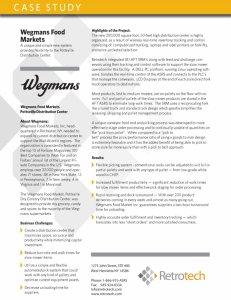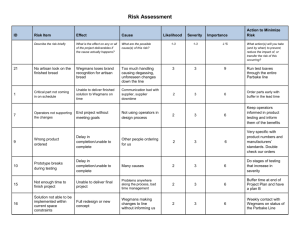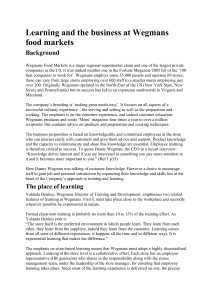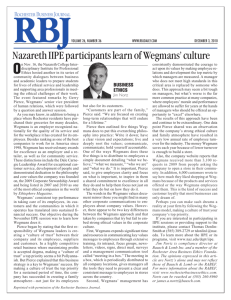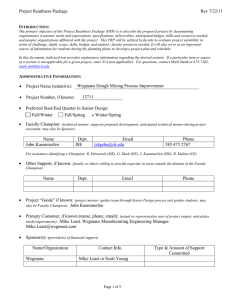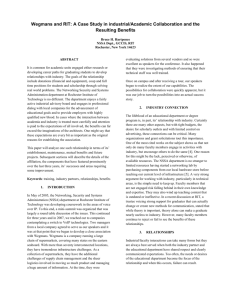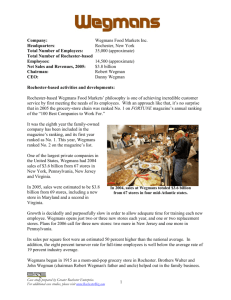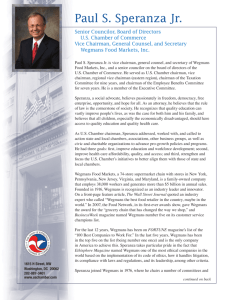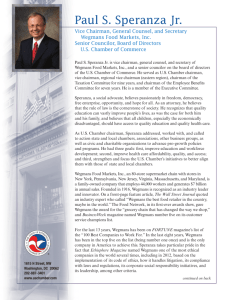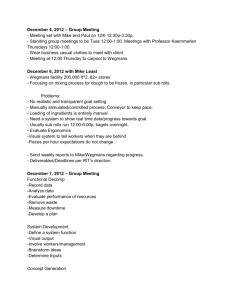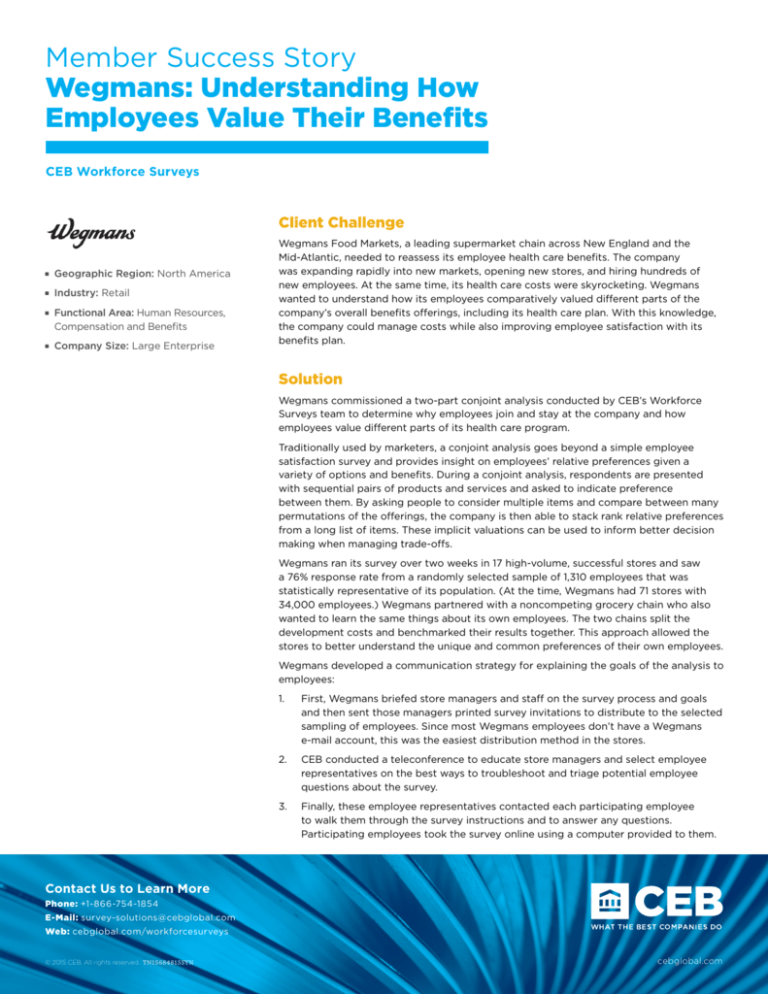
Member Success Story
Wegmans: Understanding How
Employees Value Their Benefits
CEB Workforce Surveys
Client Challenge
■■
Geographic Region: North America
■■
Industry: Retail
■■
■■
Functional Area: Human Resources,
Compensation and Benefits
Company Size: Large Enterprise
Wegmans Food Markets, a leading supermarket chain across New England and the
Mid-Atlantic, needed to reassess its employee health care benefits. The company
was expanding rapidly into new markets, opening new stores, and hiring hundreds of
new employees. At the same time, its health care costs were skyrocketing. Wegmans
wanted to understand how its employees comparatively valued different parts of the
company’s overall benefits offerings, including its health care plan. With this knowledge,
the company could manage costs while also improving employee satisfaction with its
benefits plan.
Solution
Wegmans commissioned a two-part conjoint analysis conducted by CEB’s Workforce
Surveys team to determine why employees join and stay at the company and how
employees value different parts of its health care program.
Traditionally used by marketers, a conjoint analysis goes beyond a simple employee
satisfaction survey and provides insight on employees’ relative preferences given a
variety of options and benefits. During a conjoint analysis, respondents are presented
with sequential pairs of products and services and asked to indicate preference
between them. By asking people to consider multiple items and compare between many
permutations of the offerings, the company is then able to stack rank relative preferences
from a long list of items. These implicit valuations can be used to inform better decision
making when managing trade-offs.
Wegmans ran its survey over two weeks in 17 high-volume, successful stores and saw
a 76% response rate from a randomly selected sample of 1,310 employees that was
statistically representative of its population. (At the time, Wegmans had 71 stores with
34,000 employees.) Wegmans partnered with a noncompeting grocery chain who also
wanted to learn the same things about its own employees. The two chains split the
development costs and benchmarked their results together. This approach allowed the
stores to better understand the unique and common preferences of their own employees.
Wegmans developed a communication strategy for explaining the goals of the analysis to
employees:
1.
First, Wegmans briefed store managers and staff on the survey process and goals
and then sent those managers printed survey invitations to distribute to the selected
sampling of employees. Since most Wegmans employees don’t have a Wegmans
e-mail account, this was the easiest distribution method in the stores.
2.
CEB conducted a teleconference to educate store managers and select employee
representatives on the best ways to troubleshoot and triage potential employee
questions about the survey.
3.
Finally, these employee representatives contacted each participating employee
to walk them through the survey instructions and to answer any questions.
Participating employees took the survey online using a computer provided to them.
Contact Us to Learn More
Phone: +1-866-754-1854
E-Mail: survey-solutions@cebglobal.com
Web: cebglobal.com/workforcesurveys
© 2015 CEB. All rights reserved. TN15684815SYN
cebglobal.com
“Without CEB’s survey analysis,
we absolutely would have
done the opposite and gotten
this wrong.”
Anne Meath
VP of Organizational Development
Wegmans
The conjoint analysis presented two types of questions about health care:
■■
■■
Satisfaction questions identified any systemic differences in engagement and
satisfaction between employees working in existing markets and those working in
new ones. A question might ask employees to rank how satisfied or dissatisfied they
are with the health benefits provided by Wegmans from a set of choices ranging from
“very highly dissatisfied” to “very highly satisfied.”
Trade-off questions assessed how employees perceived the value of their total
rewards. These questions asked respondents to choose between two or more
hypothetical “packages” consisting of varying levels of employment attributes such as
health care and compensation. For example, asking them to choose between a 5% base
pay increase combined with lower health insurance deductibles versus a simple 10%
base-pay increase as the alternative. Employees were asked to rank these options by
order of preference for each item.
Results
Both the satisfaction and trade-off questions demonstrated that employees valued health
benefits as a deciding factor for both joining and staying at the company. In particular,
the conjoint analysis revealed that offering even basic health care coverage to employees
who were not currently eligible would drive significant incremental value due to how
highly employees regarded health care benefits. The analysis indicated that a $107
investment per non-eligible employee would cost $1.5 million but would feel like $32.5
million to the employees.
Surprisingly, Wegmans noticed that base pay was ranked at the bottom of both of these
lists in terms of perceived employee value. Also interesting, when asked whether they
wanted a lower deductible or lower premium, employees were more willing to pay more
per paycheck to have lower overall liability.
Wegmans’ Conjoint Study Results
What Contributing $1.00 actually feels like to Wegmans employees when there is...
No annual health Insurance deductible
Lower health insurance premiums: employee pays $5 less per week
-$0.09
-$1.83
-$1.96
-$5.71
-$6.59
-$9.89
$0.15
$0.03
Lower Premiums: employees pays $10 less per week
Higher Premiums: employees pays $5 more per week
Higher Premiums: employees pays $10 more per week
Higher deductible: $750/Individual, $1,500/Family
Higher deductible: $1,500/Individual, $3,000/Family
Higher deductible: $2,000/Individual, $4,000/Family
Contact Us to Learn More
Phone: +1-866-754-1854
E-Mail: survey-solutions@cebglobal.com
Web: cebglobal.com/workforcesurveys
© 2015 CEB. All rights reserved. TN15684815SYN
cebglobal.com

